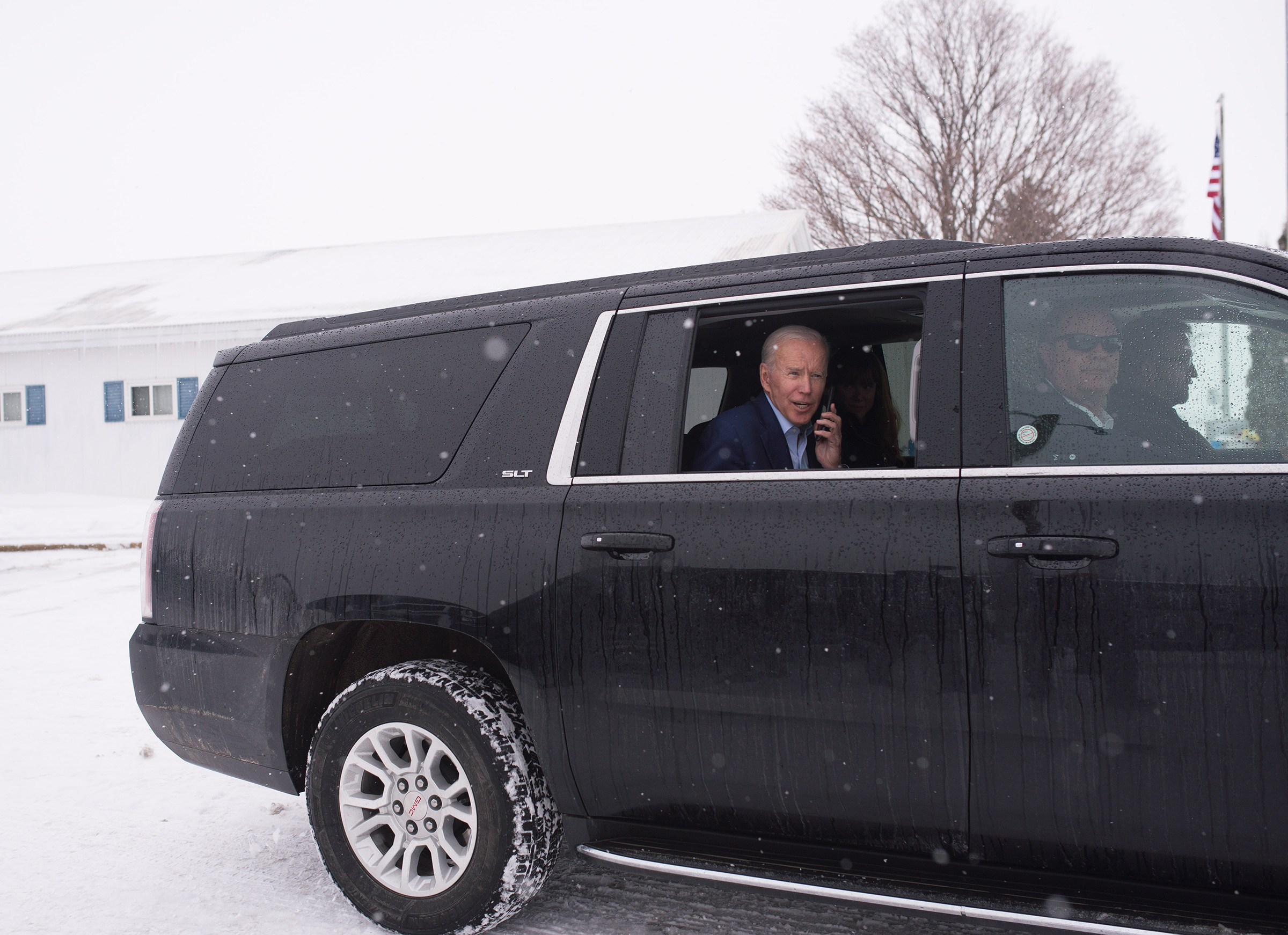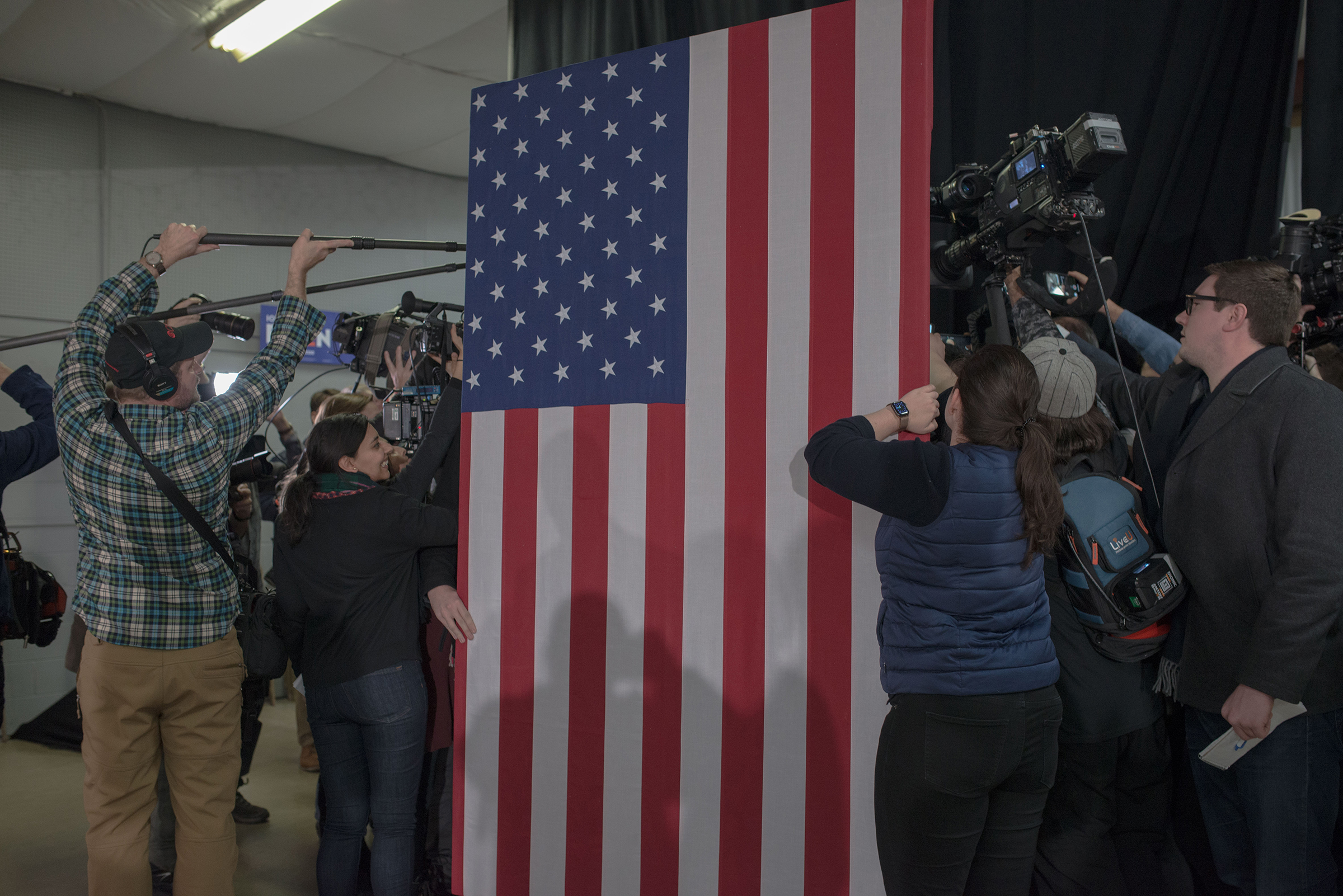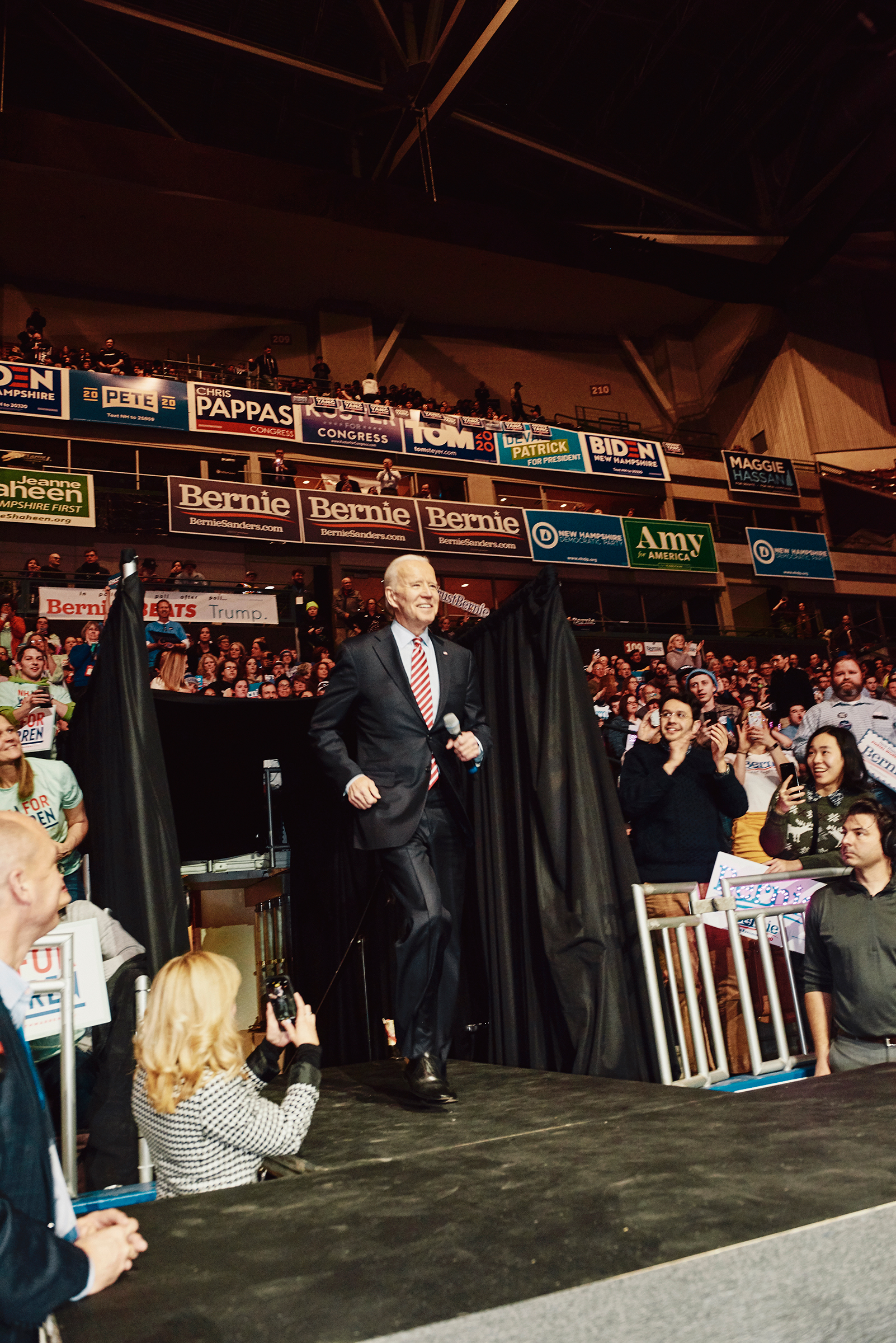The only thing more powerful than a dragon is a dragon slayer. For four years, Donald Trump’s penchant for division and chaos was the dominant force in American life. In the end, after a long and excruciating battle, it was vanquished by Joe Biden’s promise of decency, unity and national healing.
Biden’s win was at once widely anticipated and stubbornly doubted. It came after days of vote counting that was both predictable and agonizing. It was not the easy landslide many Democrats had hoped for: Trump was defeated, but Trumpism seems more entrenched than ever in the GOP. Republicans picked up seats in the House and appeared more likely than not to maintain control of the Senate, pending two Senate runoffs in Georgia. But all along, Biden had bet that slow and steady would win the race, and on Saturday that bet finally paid off.

Biden stayed calm through early defeats on Election Night, urged patience during vote-counting delays in crucial states, and projected confidence despite torrents of disinformation spread by the President. He rebuilt the so-called “Blue Wall” that crumbled in 2016; first Wisconsin, then Michigan, then finally Pennsylvania tipped in his favor, a slow drumbeat of rejection of a President who had won all three states four years ago.
Biden won more votes than any Presidential candidate in American history, shattering Barack Obama’s record. As mail-in ballot totals trickled in Wednesday and Thursday, his team grew increasingly encouraged. By Friday, the mood was ecstatic. When Biden pulled into the lead in Pennsylvania, GIFs of Gritty, the mascot of the Philadelphia Flyers, started circulating in staff slack rooms. Staffers celebrated with a digital dance party over Zoom, complete with champagne or coffee or whatever people happened to be drinking in their homes.
The victory was a vindication of a style of American politics that many feared was gone forever. A career politician in a nation that claims to loathe them, Biden won not with historic momentum as Obama did, nor by surprise as Trump did, but with the steadfast deliberation of a man who knows who he is and what America needs.
Throughout a contentious Democratic primary and a general election upended by a pandemic, Biden stuck to the same message he’s had since he announced his campaign in 2019: a promise to govern with empathy, to provide experience in a time of crisis, to “restore the soul of the nation.” At first, the message seemed out of step with the times, as Biden’s primary opponents raced to embrace the mantle of progressive revolution. But then, very quickly, the times changed: COVID-19 made the nation yearn for a leader with competence and empathy. In the end, the contrasts between candidates broke in his favor: an experienced statesman vs. an incompetent President, a leader who comforted COVID-stricken families vs. a celebrity who mocked the virus, a candidate who pledged to heal a nation vs. an incumbent who had nearly ripped apart.


Messages alone don’t win elections. Campaigns do, and Biden’s once rickety operation grew into perhaps the most sophisticated digital apparatus in American political history. Limping out of the primary with a skeletal team and lackluster fund-raising, the candidate most famous for his hugs and handshakes was suddenly forced to campaign from his home office. What looked like a setback became an opportunity for reinvention. Biden’s campaign ripped up its playbook and built a state-of-the-art digital shop, becoming the first in American history to run a general-election campaign nearly entirely online, using an avalanche of data-driven texts, calls and Facebook groups. By the fall, the Biden campaign was like a vintage Corvette with a brand-new engine, racing against a monster truck careening off the road.
Read more: Inside Joe Biden Campaign’s Plan to Get Out the Vote Online
Biden’s most important move was to stay the course, keeping out of Trump’s way as the incumbent imploded. Trump began 2020 as the third President ever impeached and went on to bungle the federal response to a virus that has killed more than 230,000 Americans. He proved incapable of even feigning sympathy for the millions suffering from the disease and the recession it caused. “It’s always been my feeling that Trump would defeat Trump,” says veteran Democratic strategist David Axelrod. “Part of politics is being good and part of politics is being lucky, and Biden was lucky to have Trump as an opponent.”
But sometimes you make your own luck. And after three presidential campaigns, 36 years in the Senate and eight years as Vice President—after a lifetime of being almost the right person at nearly the right time—Joe Biden was finally the man for the moment.
That moment was nearly four years in the making. Just hours after Trump took the oath of office, millions of activists poured into the streets for the Women’s March, considered the largest single-day protest in U.S. history. Then they returned home and spent the next three years organizing their neighbors. These new activists, many of them women, ran for office in record numbers; by 2018, their energy flipped the House of Representatives, along with six statehouses and seven governor’s seats. By the time the presidential primary rolled around, the Democratic base was primed and ready.

When Biden joined the race in April 2019, it was as an old soldier stepping into one final battle. After eight years serving as Vice President to the most popular figure in the party, and with decades of deep relationships to build on, it was no surprise that polls registered him as the front runner. The President’s impeachment—over a “do us a favor” call to the President of Ukraine—flowed from efforts to sabotage the possibility of a Biden candidacy; the President regarded him as the only Democrat who could beat him. Yet as the race began, the presumptive favorite seemed a step slow and three years too late. He’d had his chance to run in 2016, the conventional wisdom went, and now the party seemed to be seeking something else—a firebrand to reinvent it.
“You don’t need to do this,” Biden’s close friend, Delaware Sen. Chris Coons, recalls telling him.
“But does the country need me to do this?” Biden replied.
“Yes,” Coons told him. “You are the candidate who can win.”
Biden launched his campaign with a video that called the fight against Trump “a battle for the soul of this nation.” He described Trump’s four years as an aberration. “But if we give Donald Trump eight years in the White House, he will forever and fundamentally alter the character of this nation, who we are,” he said. “And I cannot stand by and watch that happen.”
This was the story Joe Biden told about America, a story that barely changed in the ensuing 18 months. In his telling, our country is defined by its fundamental decency, and that decency—more than policy or ideology or the economy—was on the ballot. America was a nation full of honorable people who had made a mistake by electing the wrong President, but “given half a chance” they’d return to their true character. Trump ran on a brutal vision of American greatness; Biden sought a return to American goodness.

In a crowded field of movement leaders like Bernie Sanders, policy visionaries like Elizabeth Warren, and history makers like Kamala Harris and Pete Buttigieg, Biden could barely pack a room. But he made a key decision early: to hold firm to the center while his rivals raced to the left. As they argued over the details of Medicare for All, Biden defended Obama’s Affordable Care Act. While they gave rousing speeches about “revolution” and “big structural change,” he stayed in his lane, reassuring Americans that he could carry them back to a calmer, less politically divisive past.
At first, nobody seemed to be listening. Biden trailed Buttigieg and Sanders in fund-raising and fervor. He came in fourth in Iowa and fifth in New Hampshire. He seemed too old, too white, too centrist, too yesterday. “The consistent criticism was, ’Oh, Biden’s not woke enough, he doesn’t have enough followers on Twitter, he’s not snappy enough,’” Coons says. “Joe has consistently seen who Middle America still is. And it’s easy to miss that if the first thing you do is look at Twitter.”
But Biden plowed ahead, handshake by handshake, hug by hug. On the trail, he did what he has done for more than 40 years, listening as voters confided in him about the worst moments of their lives, because they already knew about his: his wife and daughter killed in a car accident on their way to buy Christmas presents in 1972; his son Beau felled by brain cancer in the prime of his life, in 2015. In the elevator on the way to his New York Times editorial-board interview, a security guard named Jacquelyn turned to him and said, “You’re my favorite.” Biden didn’t get the Times endorsement, but got a selfie with Jacquelyn. And it turned out the loyalty of people like Jacquelyn would be the most important factor in the race.
Read more: Joe Biden’s 2020 Campaign Is the Latest Test in a Lifetime of Loss
The campaign kept insisting that if they could just make it to South Carolina, they’d be back in the running. With the help of an endorsement from a South Carolina kingmaker, Rep. Jim Clyburn, Biden carried the state with decisive support from Black voters. “It was as important for him to win South Carolina as it was for President Obama to win Iowa,” says Valerie Jarrett, a longtime adviser to both men.

The race changed overnight—literally. The next morning, Buttigieg took a hard look at his numbers. “By the time I went to bed that Saturday night, that path was slipping away,” he says. His dropout on Sunday and endorsement on Monday triggered a moderate consolidation: Sen. Amy Klobuchar suspended her campaign and endorsed Biden the same day; Cory Booker and Harris followed suit. Suddenly the race had narrowed to Biden vs. Sanders.
Three days later, it was practically over. On Super Tuesday, Biden swept 10 of 14 states; a week later, he won primaries in Michigan, Missouri and Mississippi, establishing the contours of a multi-racial coalition that included Black voters, white suburban voters and inroads with the white working class. Sanders may have enthralled the Twitterati, but it was clear that swing-state voters saw Biden as the one who could beat Trump. “Biden did not spend a lot of time trying to appeal to the activist base of the Democratic Party,” says progressive strategist Sean McElwee, “and one of the things that turns out to be true is that the old-school people had a lot of pretty decent ideas of how to make this work.”
Biden came out of the primary with a lead in the polls but a slim staff, lots of momentum but little money. “The campaign needed one of those defibrillators you use on heart-attack patients,” says one senior Biden adviser. So even as Biden stuck to his message, he shook up his team. He replaced campaign manager Greg Schultz with veteran campaign hand Jen O’Malley Dillon, who had served as deputy campaign manager for Obama’s 2012 re-election and had helped modernize the Democratic Party’s data program. O’Malley Dillon set out to rebuild a sinking ship that happened to be floating in the right direction. “It was not an efficient running machine, and she professionalized it,” says the adviser. “She’s a hard-ass, and she’s good.”
It wasn’t just that she had to rebuild; she had to construct something barely resembling a typical campaign. There would be no throngs of canvassers, no big rallies, no fancy fundraisers. It was deemed too dangerous for the 77-year-old candidate to campaign in person, so for months he held virtual events and livestreamed speeches from his home. Trump mocked him, but Biden stuck to the plan and tuned out the noise. He released a detailed agenda to tackle the pandemic and another for economic rebuilding. And he doubled down on his message of empathy and decency. Trump went golfing as the COVID-19 death toll approached 100,000; Biden commemorated the grim milestone with a solemn two-minute video message to the families of the dead. “I think I know what you’re feeling,” he said. “You feel like you’re being sucked into a black hole in the middle of your chest.”


Read more: Here’s What We Know About Joe Biden’s COVID-19 Plan
Early on, O’Malley Dillon decided a traditional field operation wouldn’t work during a pandemic. Trump’s campaign was still knocking on doors and registering voters, but Biden’s would be run almost entirely online. So even though her background was in field organizing, O’Malley Dillon turned the Biden campaign into perhaps the largest digital organizing machine in American political history. In the spring, the campaign was considering outsourcing the digital operation, but instead she built it in-house: turbocharging growth of Biden’s email list, spending millions on online advertising and hiring a digital staff that was 15 times bigger than it had been in the primary, including many staffers from rival primary campaigns. Former Harris, Warren and Sanders staffers brought new digital strategies into Bidenworld, particularly the idea of a national distributed organizing model pioneered by the Sanders campaign: an army of safe-state volunteers who could be digitally deployed wherever the campaign needed them.
It worked. By September, the digital operation was humming: Biden and the Democrats raised $364.5 million in August, the largest one-month haul ever by a presidential campaign, a record they broke the following month with $383 million in September.
In the hard world of politics, the pandemic was in some ways a real benefit to Biden. It made the race a referendum on Trump, and kept his failures in the headlines. Amid a plague, a recession and a national reckoning over systemic racism, Trump’s errors set a low bar. The President had “so many dropped balls,” says Republican strategist Ron Bonjean, beginning with his “inability to empathize with the American people about the situation they’re in.” Trump called protesters “thugs,” threatened them with “vicious dogs” and promised that “when the looting starts, the shooting starts.” Biden consoled George Floyd’s family, visited with racial-justice protesters in Wilmington, Del., and attended a community meeting at a local Black church.

By the fall, Biden had hit his stride: the same classic message, delivered by a modern, efficient campaign. Running a digital operation allowed Biden’s team to keep a gaffe-prone candidate under wraps, concealing his missteps and blasting his charming moments, imposing rigid order on a candidate who was never known for his discipline. It paid off: When Biden tapped Sen. Kamala Harris as his running mate, the choice was broadcast to supporters via text message instead of leaking to the press, allowing the campaign to channel the excitement over the nomination of the first Black woman on a presidential ticket into hard cash: $26 million in 24 hours, an unprecedented fund-raising spree. Armed with this haul, Biden outspent Trump nearly 2 to 1 down the stretch on the airwaves in battleground states. Digital organizers recruited more than 200,000 volunteers and deployed them to send hundreds of millions of text messages and phone calls. It was a 21st century virtual juggernaut designed to promote an analog candidate.
Read more: How Kamala Harris’ Senate Record Reveals What Kind of National Leader She May Be
He also successfully sidestepped most of the attacks Trump could use against him. Biden embraced a robust climate-and-jobs plan developed with the help of top youth climate leaders and Alexandria Ocasio-Cortez, but rejected the idea of a Green New Deal. He proposed police reforms, but refused to join calls to “defund the police.” Trump tried to attack Biden as part of the “radical left,” but it rang hollow; calling him a “socialist” didn’t stick (though the attacks may have resonated in Florida, where Biden lost ground with Cuban voters.) Trump tried bullying Biden at a debate, but it backfired. Circulating rumors about the former Vice President’s son Hunter failed. Trump never seemed to be able to land a punch that changed the dynamics of the race. “Stability has been the hallmark of this campaign, in the primary and the general,” says Biden’s longtime pollster John Anzalone.
The campaign stayed focused on the states he needed to win, without getting distracted by Democratic pipe dreams. Democrats got their hopes up about picking up states like Texas, but Biden resisted entreaties to expand his focus. The campaign always knew that its path to victory wound through the Upper Midwest, and focused most of their attention on Wisconsin, Michigan, and Pennsylvania. Biden and his surrogates returned frequently to those states in the final weeks of the campaign, ending with a barnstorm across Pennsylvania on the day before the election. The plan was to boost urban and suburban turnout that had sagged in 2016, while cutting into Trump’s margins in rural and exurban areas.
The plan required patience and fortitude. The campaign knew that early returns would show Trump in the lead in Pennsylvania, and expected that it would take hours or days to count the Democratic mail-in votes coming out of strongholds like Philadelphia. It was all about sticking to the plan and staying the course. Or, as Biden and Harris both tweeted: “Keep the faith.”
In the end, the plan worked. The campaign won the states they needed and lost the states they didn’t, and kept America calm through a long and excruciating campaign week. It turned out Biden had been right along along: America didn’t want a revolution; it just wanted to heal from four years of chaos and division. And so, armed with a stable campaign in unstable times, and a comforting message in a disquieting moment, Joe Biden completed his slow and steady march to victory, exactly as he said he would.
—With reporting by Tessa Berenson / Washington and Leslie Dickstein and Julia Zorthian
Buy a print of TIME’s ‘A Time to Heal’ cover here
More Must-Reads from TIME
- Donald Trump Is TIME's 2024 Person of the Year
- Why We Chose Trump as Person of the Year
- Is Intermittent Fasting Good or Bad for You?
- The 100 Must-Read Books of 2024
- The 20 Best Christmas TV Episodes
- Column: If Optimism Feels Ridiculous Now, Try Hope
- The Future of Climate Action Is Trade Policy
- Merle Bombardieri Is Helping People Make the Baby Decision
Write to Charlotte Alter at charlotte.alter@time.com
